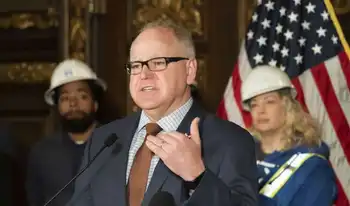Solar plant opens for business at a university
By The Bio-Energy Site News Desk
NFPA 70e Training
Our customized live online or in‑person group training can be delivered to your staff at your location.

- Live Online
- 6 hours Instructor-led
- Group Training Available
The 5.3MW solar plant began producing electricity in December. The plant will provide one-third of electricity needs on the university's Foothills Campus, about three miles west of the main campus.
Fotowatio Renewable Ventures, or FRV, built the project in two phases on 30 acres with the second phase completed at the end of 2010.
The project is one of the largest at a US university, according to the most recent statistics compiled by the Association for the Advancement of Sustainability in Higher Education. The plant will reduce greenhouse gas emissions into the atmosphere by more than 6 million kilograms — the equivalent of removing more than 520 cars off the road each year.
Colorado State is one of the foremost universities in incorporating sustainable living on campus. From building a biomass boiler and solar plant on the Foothills Campus to conserving water and energy in residence halls on the main campus, the university strives to lessen energy consumption and provide students with green living alternatives.
"Colorado State continues to be a pacesetter in employing green solutions," said Colorado State President Tony Frank.
"This is a practical example of our commitment to renewable energy and the public-private partnerships that are crucial to making these projects successful."
The CSU Foothills Campus solar power system is funded by a partnership that includes regional utility Xcel Energy and renewable energy developer FRV. The project, owned and operated by FRV, uses a Power Purchase Agreement structure that leverages tax credits and incentives. The PPA structure enables CSU to purchase electricity produced by the plant at a fixed rate for 20 years, providing CSU with protection against future rate increases without any upfront costs to the university.
Colorado State's project, part of the Xcel Energy Solar Rewards program, received a rebate to offset construction costs. This project generates renewable energy credits that Xcel Energy purchases in support of Colorado's Renewable Energy Standard, which requires large utilities to generate 30 per cent of their power from renewable energy sources by 2020. FRV built the first phase in 2009 with design and installation by AMEC, an international engineering and construction company. Array Technologies built the Wattsun single-axis tracking system to maximize solar electrical generation by following the path of the sun during the day for greater efficiency and energy production.
"By securing solar power through a power purchase agreement rather than major capital investment, Colorado State University is benefiting from a renewable energy system that is very cost-effective," said Jose Benjumea, president of FRV.
"This collaborative effort serves as an example of how successful public-private partnerships can help universities and other public institutions make the most of financing, including tax credits and other incentives available for solar energy."
Phase two was constructed by Global Energy Services, an independent service provider. GES installed the solar panels on racks manufactured by Macapisa.
The inverters that convert DC electric power to AC power for both phases are provided by Advanced Energy, a local Fort Collins company. All of the solar power plant features photovoltaic modules by Trina Solar.











